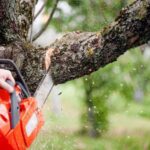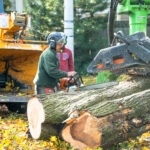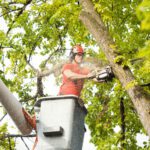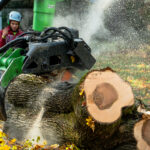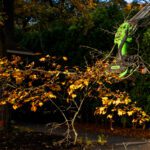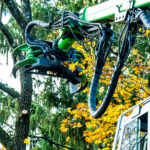Signs Your Tree Needs Cabling or Bracing
Strong, healthy trees are built to withstand a lot, but not every tree grows with perfect structure. Some develop weak limbs, unbalanced canopies, or even cracks in their trunks. Left unaddressed, these issues can increase the risk of tree failure—especially during New England’s heavy storms and winters. That’s where tree cabling and bracing come in.
Cabling and bracing are tree support systems installed by professional arborists to stabilize weak trees. The goal isn’t to restrict growth, but to add support where nature needs a little help. At Northeastern Tree Service, we provide cabling and bracing for homeowners, businesses, and municipalities across Rhode Island, Massachusetts, and Connecticut to help prevent damage before it happens.
What Is Tree Cabling and Bracing?
Tree cabling involves installing flexible steel cables high in the canopy to redistribute structural stress and reduce the movement of vulnerable limbs. Bracing, on the other hand, uses rigid steel rods to provide direct support to cracked or split trunks and limbs. Together, they create a safety system that strengthens trees while still allowing them to grow naturally.
These methods are often used in combination with professional tree pruning to remove weak growth and balance the canopy.
Common Signs Your Tree May Need Cabling or Bracing
Recognizing when a tree needs extra support is not always obvious, but certain red flags can signal that it is time to consult an arborist.
1. Weak Branch Unions
When two large limbs grow from the same point on a trunk in a tight “V” shape, the joint can be weak and prone to splitting. Cabling provides reinforcement before a storm causes the limbs to break apart.
2. Cracks in the Trunk or Limbs
Visible cracks are clear signs of structural weakness. Bracing can help stabilize these areas and prevent complete failure. If left untreated, cracks often worsen with the weight of snow and ice.
3. Heavy or Overextended Limbs
Large limbs that stretch too far from the trunk may not have enough support to withstand wind, snow, or ice. Cabling can reduce their movement and risk of breakage.
4. Split or Multi-Stem Trees
Trees with multiple trunks or a central split often need bracing rods to hold the structure together. Without support, these trees are more likely to collapse under pressure.
5. Storm-Prone Locations
If your property is in a high-wind area or your trees are exposed to New England’s harsh winters, even healthy trees may benefit from preventive cabling and bracing.
Why Tree Support Matters
Trees are long-term investments in your property’s safety and beauty. Failing to provide structural support when needed can result in:
• Property damage from falling branches
• Personal injuries to family members, employees, or visitors
• Costly emergency tree removals after storms
• Loss of mature trees that could have been preserved with timely care
By addressing structural weaknesses early, you extend the life of your trees and reduce the chance of unexpected hazards.
Professional Cabling and Bracing Services
At Northeastern Tree Service, we approach cabling and bracing as part of a broader tree care plan. We assess each tree’s structure, age, and location to determine the best solution. Our services include:
• Installing flexible tree cabling and bracing systems
• Combining support systems with pruning for optimal results
• Regular inspections to ensure cables and braces remain effective
• Safe removal and replacement when a tree can no longer be preserved
Whether you are a residential homeowner worried about backyard trees or a commercial property manager with large shade trees near buildings, we can design a support system tailored to your needs.
Cabling and Bracing as Part of Storm Preparation
Winter storms in New England place unique stress on trees. Ice buildup, snow accumulation, and strong winds can push already weak limbs past their breaking point. Cabling and bracing, along with pruning and plant health care, form a comprehensive strategy for reducing risks.
If a storm does cause damage despite your efforts, we also provide emergency tree service to restore safety quickly and efficiently.
Work With Certified Tree Care Professionals
Tree cabling and bracing are not DIY projects. Improper installation can damage the tree or fail to provide the intended support. At Northeastern Tree Service, our certified arborists use industry standards and specialized equipment to install support systems that are safe, effective, and long-lasting.
We serve clients across Rhode Island, Massachusetts, and Connecticut, and our reputation as trusted tree care professionals is built on decades of experience and results.
Conclusion
If your trees show signs of structural weakness, don’t wait for the next storm to reveal the problem. Cabling and bracing can prevent failure, preserve valuable trees, and keep your property safe.
Contact Northeastern Tree Service today to schedule an inspection and learn whether your trees could benefit from professional cabling and bracing.
